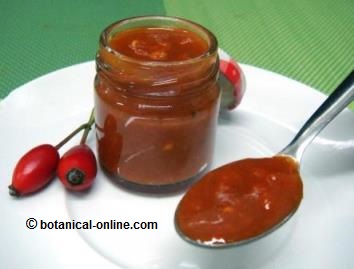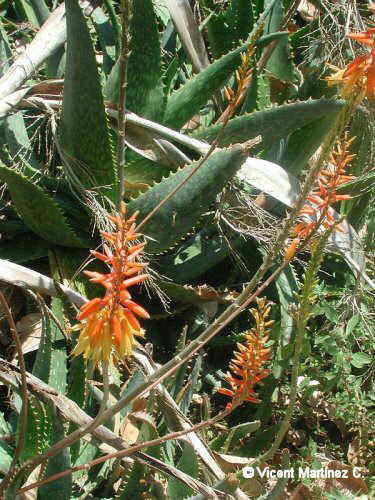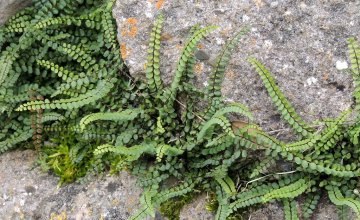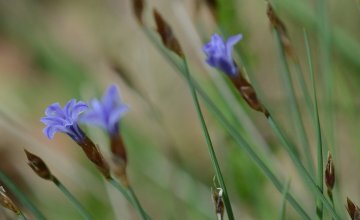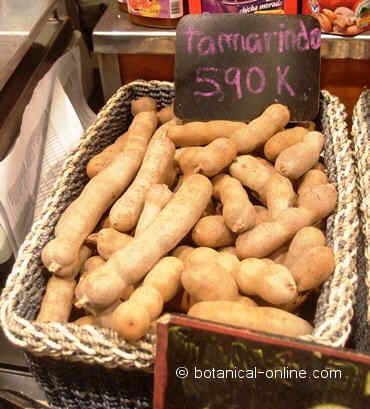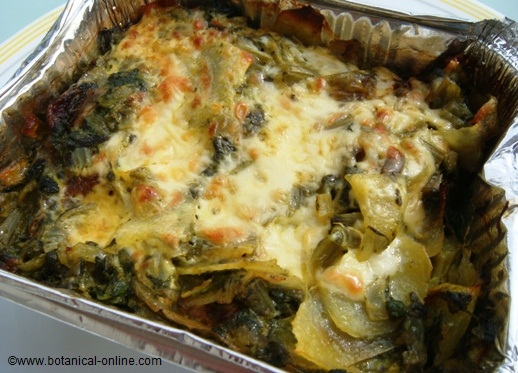Contents
(Cocos nucifera)
CHARACTERISTICS OF COCONUT PALM
What is a coconut?
A coconut is the fruit (a drupe) of the coconut palm or also called coconut. This fruit is characterized by its big size, because its seed is the largest known after coco-de-mer (Lodoicea maldivica).
The coconut is a nut which has a green color very fibrous mesocarp (similar to that one having nuts or almonds) and which is not consumed. The edible part of this fruit is the seed pulp.
Mature coconut seed accumulates inside a pulp (endosperm) that is very aromatic, oily, white and solid, which is consumed and it is called “coconut”.
* More information: Characteristics of coconut.
Coconut as an edible food
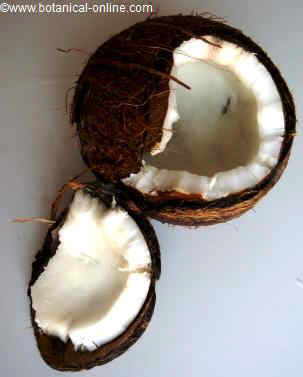 In the picture: mature coconut seed, open. The white edible pulp of the seed (endosperm)can be observed.
In the picture: mature coconut seed, open. The white edible pulp of the seed (endosperm)can be observed.Coconut is a seed filled with minerals and trace elements important for the proper functioning of organism.
Coconut consumption is interesting in remineralizing diets as diets for athletes, since the minerals in coconut are essential to replenish electrolytes lost by sweating. It is also a nut that brings energy because it contains a lot of protein and fats.
It is also appropriate to introduce it in any fruit balanced diet because it provides antioxidant minerals.
Food products obtained from the coconut:
* More information: Coconut recipes
Coconut nutritional value
- Water: coconut pulp contains 45 % of water. This percentage in fleshy fruits is higher, close to 90 %, because coconut is a nut from which we consume its almond, and,therefore, it is less juicy.
- Calories: 100g. coconut provide 354kcal. It is a very energetic fruit because of its fat and carbohydrates, but also rich in important nutrients such as minerals and trace elements.
- Carbohydrates: The carbohydrate content of coconut seed is 15g . per 100g. coconut. It contains complex carbohydrates of slow absorption: pentosans and galactomannan, and simple carbohydrates that are quickly absorbed, such as fructose, glucose, galactose, mannan, sucrose, raffinose and L rhamnose.
Because of its fast and slow sugars, it is a fruit suitable for athletes and people with diabetes, who must take into account the low glycemic index of coconut (45) tcompared to other fruits,
- Protein: coconut contributes about 6 g. of protein per serving (200g.). It is a low amount, but much higher than other fleshy fruits provide .
- Fats: Fats are the main energy component of the coconut, as with other nuts. Also, coconut is one of the vegetables with the highest saturated fat content. This is important because, although it is an excellent energy source, consumed in excess, the coconut can increase blood lipid levels.
- Fiber: coconut is a fruit rich in fiber, because in a 100g serving, it provides 9g from the 35g recommended daily amount for an adult .
- Vitamins: We should emphasize its contribution of B vitamins, that are very important for energy in the body., Coconut does NOT contain vitamin B12, such as some publications suggest. Vitamin B12 is unique to animal foods such as dairy, meat and egg.
- Minerals: coconut contains many minerals and trace elements (minerals found in the body in smaller amounts). Among its notable minerals, it contains potassium (diuretic effect), phosphorus (energizing), selenium,(a powerful antioxidant) and chromium (It helps regulate blood sugar levels)
* More information: Properties of Coco.
Edible composition of coconut per 100g.
Nutrient | Amount |
| Water (g.) | 46,99 |
| Calories (Kcal.) | 354 |
| Carbohydrates (g.) | 15,23 |
| Proteins (g.) | 3,33 |
| Fats (g.) | 33,49 |
| From which saturated (mg.) | 29,69 |
| From which monounsaturated (mg.) | 1,43 |
| From which polyunsaturated (mg.) | 0,37 |
| Cholesterol (mg.) | 0 |
| Fiber (g.) | 9 |
Vitamins | Amount |
| Vitamin C (mg.) | 3,3 |
| Vitamin B1 (mg.) | 0,07 |
| Vitamin B2 (mg.) | 0,02 |
| Vitamin B3 (mg.) | 0,54 |
| Vitamin B5 (mg.) | 0,30 |
| Vitamin B6 (mg.) | 0,05 |
| Folates (mcg.) | 26 |
| Minerals | Amount |
| Calcium (mg.) | 14 |
| Magnesium (mg.) | 32 |
| Phosphorus (mg.) | 113 |
| Sodium (mg.) | 20 |
| Potassium (mg.) | 350 |
| Iron (mg.) | 2,43 |
| Zinc (mg.) | 1,10 |
| Copper (mg.) | 0,44 |
| Selenium (mcg.) | 10,1 |
| Manganese (mg.) | 1,50 |
Trivia: origin of the name “coconut”
The designation “coconut” was named by the Portuguese for the first time:
The Portuguese discovered the coconut in the Asian territory of Malabar (now South India), during the voyage of Vasco de Gama to India (1497-1498).
Then the word “Coco” referred to an imaginary character with which they used to scare children. Some popular songs still remember this character in the lyrics: “Go to sleep child coming Coco, and eats little children sleeping”.
The three germinative holes of coconut reminded them the figure of a monster, with two eyes and mouth (third hole). This was the reason why the fruit of the coconut was named “coco”.
Other books tell the origin of “coco” derives from the fruit similarity to a monkey, in Portuguese called macaque. As an anecdote, in some regions, some monkeys are trained to collect coconuts, and some monkey training schools still exist in southern Thailand.
![]() More information on coconut.
More information on coconut.

